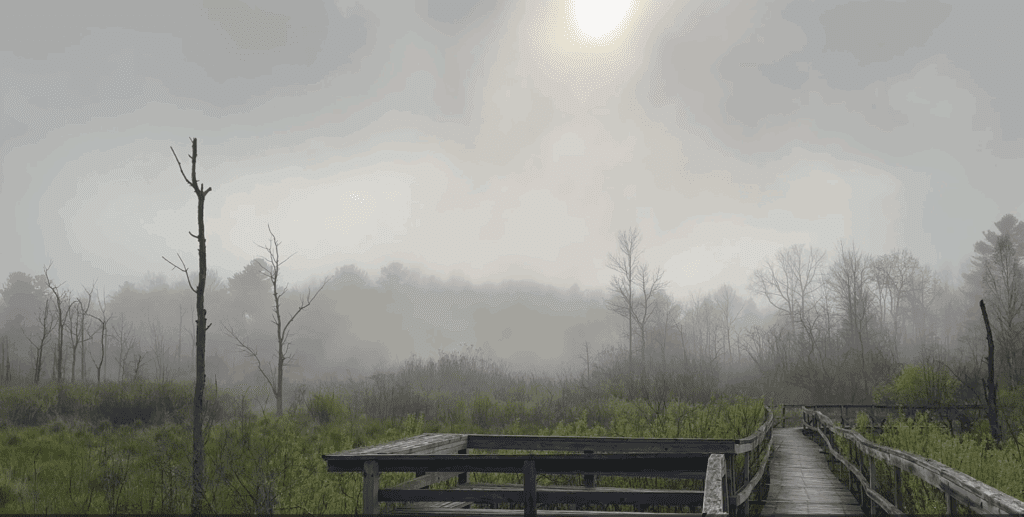By Nancy Nabak, communication coordinator
Movement that was not mine nor any other legged creature stilled me in place. It was from a thing that didn’t have wings, nor fins, nor blinking eyes. It approached as I watched the horizon from Black Cherry Trail – the May fog rolling in.

There’s a still, Van Morrison-esque experience that evolves with fog when you’re out as man in nature. My friend Daniel says he remembers fondly the sound of the foghorn while he was building his youth and teen years in Two Rivers. “Yeah, when that foghorn blows… I will be coming home. Yeah, when that foghorn blows… I wanna hear it, I don’t have to fear it…”
The opaque view of the world and the hushed colors were playing games with my brain. It was like looking at a snow globe scene through skimmed milk. And everything changed when the direction I was walking changed. Once lakeward, the fog became spirited and lively.
In Dutch folklore, Witte Wieven, ‘white women’ lure people to follow them, who are then lost forever. I wasn’t lost, but I let go, and while standing in place, followed the dancing mist with my eyes. Thinking about it now, I can see scarves of waves rolling through the marsh – luring one to pay attention in a hypnotic sort of way.
Fog also seems to slow time. The pace of a hike slows down. The intensity of moving from one bird to the next lessens, and the rush of the day seems to settle. (I like the word settle. My grandma on the farm used to say it when things were calm in the early evening.)
There are, of course, tragedies that occur because of fog as well, and some of the greatest legends are created from it. In fact, some of Lake Michigan’s most famous shipwrecks lie beneath the waters off Two Rivers and Rawley Point.
I’m grateful for that milky day on the trail, which hid the vibrant yellow warblers and orange orioles. The unexpected woke my soul.
As Van the Man sang, “…then magnificently we will float into the mystic.”
Photo by Nancy Nabak
Into the Mystic lyrics by Van Morrison, 1970
